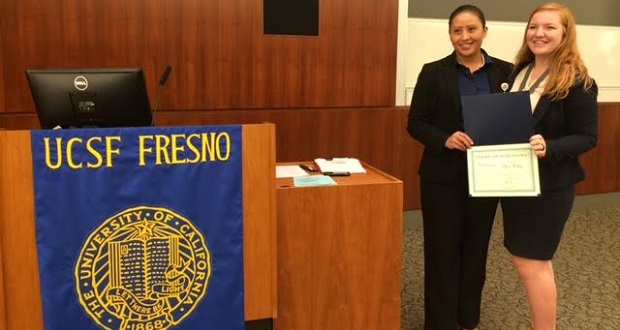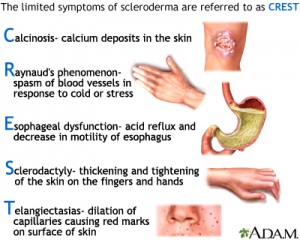COUNTY — 50 million Americans suffer from autoimmune diseases, according to American Autoimmune Related Diseases Association (AARDS), and local statistics on the numbers of people who suffer from these conditions in the Central Valley may be even higher. It’s important for the public to know the signs and symptoms in order to increase awareness of these common autoimmune diseases.
In the summer of 2015, I participated in an internship through the UCSF Summer Biomedical Internship based in Fresno. I applied in late winter of 2015, and by April or May I had an interview with a panel of scientific researchers and employees of UCSF. I started work in mid-June with Dr. Candice Yuvienco as my mentor, and we worked together on two research studies.
Dr. Yuvienco specializes in rheumatology, which is the study of joint, ligament, and tissue diseases, and she was just starting two studies involving autoimmune diseases SLE (lupus) and scleroderma. Autoimmune disease means that instead of your antibodies (the good guys who fight off infection) killing antigens (the bad guys), they attack your own body’s cells. Lupus is an inflammatory disease which causes arthritis and inflamed tissues, among other symptoms, and scleroderma is the hardening of tissues (both in- and external).
The first study I worked on was involving scleroderma and its relationship to pulmonary hypertension (PH), the constricting of arteries in the lungs and heart. A similar study that we were replicating from a different state had found that patients with PH were more likely to develop scleroderma, meaning that if a man or woman came into the doctor’s office with PH, they should be screened for scleroderma so as to catch it sooner and ease the treatment process and long-term effects.
The aim of our study was to determine if there is a similar correlation between scleroderma and PH in the Central Valley, so that hospitals and physicians can also be aware of the possibility of a patient having scleroderma.
 The second study involved only lupus, and looked at the rates of 30-day readmissions of lupus patients into hospitals. We discovered and recorded how many times a patient would be readmitted into the hospital within 30 days of first being admitted for a lupus flare-up, when symptoms are particularly bad. We also looked at the causes of these readmissions, in an attempt to better the care of our patients and save them several other trips into the hospital.
The second study involved only lupus, and looked at the rates of 30-day readmissions of lupus patients into hospitals. We discovered and recorded how many times a patient would be readmitted into the hospital within 30 days of first being admitted for a lupus flare-up, when symptoms are particularly bad. We also looked at the causes of these readmissions, in an attempt to better the care of our patients and save them several other trips into the hospital.
With each study, I helped to search through online patient records, and collect data in a spreadsheet which was then analyzed to find correlations. Although the summer–and therefore, my internship–ended before this final step could occur, the data I had helped collect did point toward a relationship between scleroderma and PH similar to what was found in the study we were replicating. A result to the lupus study was not determined by the time I left the internship and returned back to school .
.
However, one important fact I learned over the summer is that autoimmune diseases are not uncommon in our Central Valley, likely due to of the prevalence of chemical and environmental irritants that come with living in a heavily populated city, making it possible that there are people in the area with autoimmune diseases who are not aware they have them. So, here are some common symptoms of autoimmune diseases everyone should be on the lookout for:
Lupus: chronic pain and fatigue, rashes on extremities or “butterfly rash” on face, joint pain, and fever.
Scleroderma: tightening/hardening of skin, joint pain, fever, sensitivity to cold (Raynaud’s Phenomenon), abdominal problems (irritable bowel syndrome, gastroesophageal reflux disease, chronic pain, etc.), CREST (calcinosis, Raynaud’s, esophageal dysfunction, sclerodactyly, and telangiectasias).
Raynaud’s Phenomenon: sensitivity to cold, lack of circulation in extremities, rapid color change of tissue in extremities.
Sjogren’s Syndrome: dry eyes and mouth.
Rheumatoid Arthritis: joint swelling and/or pain, bone erosion, joint deformity.
For more information on autoimmune diseases, you can visit the American College of Rheumatology website, www.rheumatoidarthritis.org or schedule a visit or talk with your physician.
Clara Briley is a senior at Yosemite High School who will attend Cal Poly in the fall.





